Related Research Articles

Édouard Manet was a French modernist painter. He was one of the first 19th-century artists to paint modern life, as well as a pivotal figure in the transition from Realism to Impressionism.

The history of painting reaches back in time to artifacts and artwork created by pre-historic artists, and spans all cultures. It represents a continuous, though periodically disrupted, tradition from Antiquity. Across cultures, continents, and millennia, the history of painting consists of an ongoing river of creativity that continues into the 21st century. Until the early 20th century it relied primarily on representational, religious and classical motifs, after which time more purely abstract and conceptual approaches gained favor.
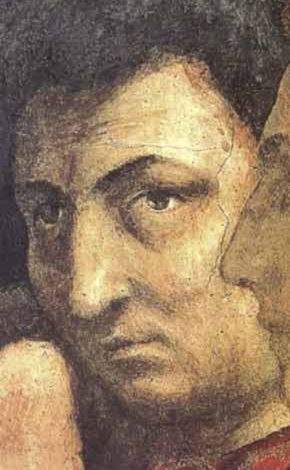
Masaccio, born Tommaso di Ser Giovanni di Simone, was a Florentine artist who is regarded as the first great Italian painter of the Quattrocento period of the Italian Renaissance. According to Vasari, Masaccio was the best painter of his generation because of his skill at imitating nature, recreating lifelike figures and movements as well as a convincing sense of three-dimensionality. He employed nudes and foreshortenings in his figures. This had seldom been done before him.

Filippo di ser Brunellesco di Lippo Lapi, commonly known as Filippo Brunelleschi and also nicknamed Pippo by Leon Battista Alberti, was an Italian architect, designer, goldsmith and sculptor. He is considered to be a founding father of Renaissance architecture. He is recognized as the first modern engineer, planner, and sole construction supervisor. In 1421, Brunelleschi became the first person to receive a patent in the Western world. He is most famous for designing the dome of the Florence Cathedral, and for the mathematical technique of linear perspective in art which governed pictorial depictions of space until the late 19th century and influenced the rise of modern science. His accomplishments also include other architectural works, sculpture, mathematics, engineering, and ship design. Most surviving works can be found in Florence.
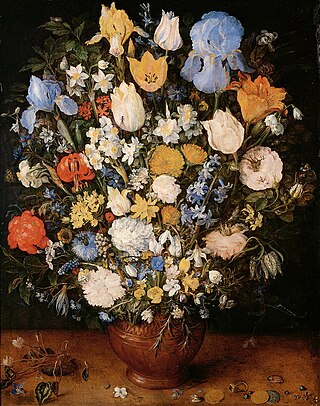
A still life is a work of art depicting mostly inanimate subject matter, typically commonplace objects which are either natural or human-made.

Renaissance art is the painting, sculpture, and decorative arts of the period of European history known as the Renaissance, which emerged as a distinct style in Italy in about AD 1400, in parallel with developments which occurred in philosophy, literature, music, science, and technology. Renaissance art took as its foundation the art of Classical antiquity, perceived as the noblest of ancient traditions, but transformed that tradition by absorbing recent developments in the art of Northern Europe and by applying contemporary scientific knowledge. Along with Renaissance humanist philosophy, it spread throughout Europe, affecting both artists and their patrons with the development of new techniques and new artistic sensibilities. For art historians, Renaissance art marks the transition of Europe from the medieval period to the Early Modern age.
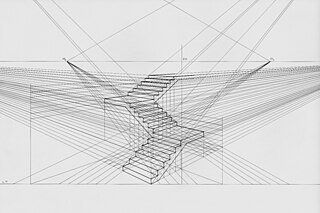
Linear or point-projection perspective is one of two types of graphical projection perspective in the graphic arts; the other is parallel projection. Linear perspective is an approximate representation, generally on a flat surface, of an image as it is seen by the eye. Perspective drawing is useful for representing a three-dimensional scene in a two-dimensional medium, like paper.

Le Déjeuner sur l'herbe – originally titled Le Bain – is a large oil on canvas painting by Édouard Manet created in 1862 and 1863.
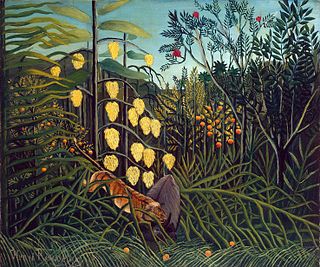
In the arts of the Western World, Primitivism is a mode of aesthetic idealization that means to recreate the experience of the primitive time, place, and person, either by emulation or by re-creation. In Western philosophy, Primitivism proposes that the people of a primitive society possess a morality and an ethics that are superior to the urban value system of civilized people.
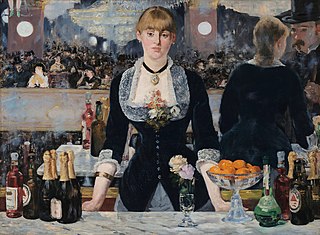
A Bar at the Folies-Bergère is a painting by Édouard Manet, considered to be his last major work. It was painted in 1882 and exhibited at the Paris Salon of that year. It depicts a scene in the Folies Bergère nightclub in Paris. The painting originally belonged to the composer Emmanuel Chabrier, a close friend of Manet, and hung over his piano. It is now in the Courtauld Gallery in London.
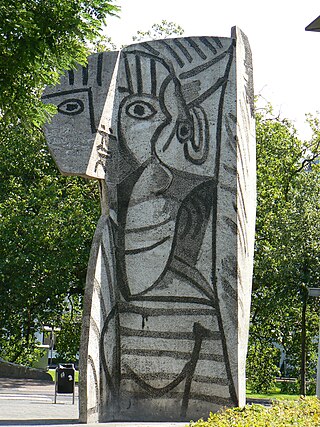
Sylvette is a large concrete sculpture created by Pablo Picasso and the Norwegian artist Carl Nesjar, which was erected in the city of Rotterdam in 1970. It is located on the corner of Westersingel next to the Museum Boijmans Van Beuningen. The sculpture portrays a young woman with a ponytail. The model for the sculpture was Sylvette David, whom Picasso met in 1953 when she was 19. The sculpture was produced following the creation of a series of artworks, known as the Sylvette series, that Picasso made of his muse in a variety of artistic styles.
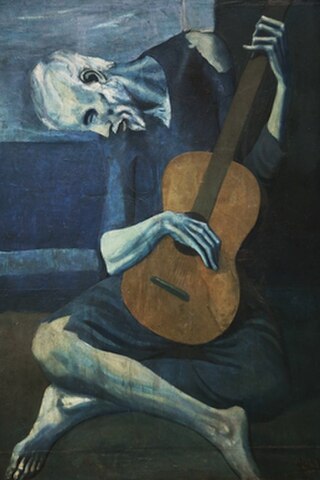
The Old Guitarist is an oil painting by Pablo Picasso, which he created in late 1903 and early 1904. It depicts an elderly musician, a haggard man with threadbare clothing, who is hunched over his guitar while playing in the streets of Barcelona, Spain. It is on display at the Art Institute of Chicago as part of the Helen Birch Bartlett Memorial Collection.

Music in the Tuileries is an 1862 oil-on-canvas painting by Édouard Manet. It is owned by the National Gallery, London and the Hugh Lane Gallery, Dublin as part of the shared Lane Bequest.
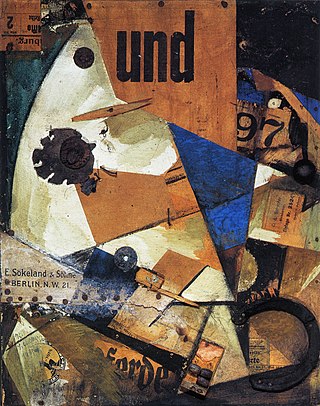
Collage is a technique of art creation, primarily used in the visual arts, but in music too, by which art results from an assemblage of different forms, thus creating a new whole.

Mathematics and art are related in a variety of ways. Mathematics has itself been described as an art motivated by beauty. Mathematics can be discerned in arts such as music, dance, painting, architecture, sculpture, and textiles. This article focuses, however, on mathematics in the visual arts.

De pictura is a treatise or commentarii written by the Italian humanist and artist Leon Battista Alberti. The first version, composed in Latin in 1435, was not published until 1450. It is one of his three treatises on art; the other two are De statua and De re aedificatoria, that would form the Renaissance concept for the fine arts: painting, sculpture, and architecture.

Ma Jolie is an oil on canvas painting by Spanish artist Pablo Picasso, which is located in the Indianapolis Museum of Art, in Indianapolis, Indiana, US. Completed in 1914, its fractured depiction of everyday objects is an example of Cubism. It is not to be confused with the 1912 Picasso of the same name, which is now in the Museum of Modern Art in New York.
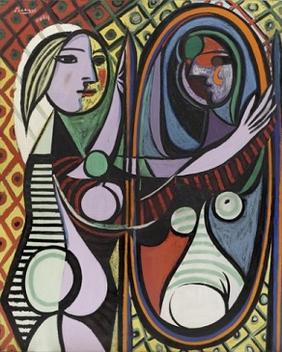
Girl before a Mirror(French: Jeune fille devant un miroir) is an oil on canvas painting by Pablo Picasso, which he created in 1932. The painting is a portrait of Picasso's mistress and muse, Marie-Thérèse Walter, who is depicted standing in front of a mirror looking at her reflection. It is housed in the collection of the Museum of Modern Art in New York City.

Femme au miroir, Femme à sa toilette or Lady at her Dressing Table, is a painting by the French artist Jean Metzinger. This distilled synthetic form of Cubism exemplifies Metzinger's continued interest, in 1916, towards less surface activity, with a strong emphasis on larger, flatter, overlapping abstract planes. The manifest primacy of the underlying geometric configuration, rooted in the abstract, controls nearly every element of the composition. The role of color remains primordial, but is now restrained within sharp delineated boundaries in comparison with several earlier works. The work of Juan Gris from the summer of 1916 to late 1918 bears much in common with that of Metzinger's late 1915 – early 1916 paintings.
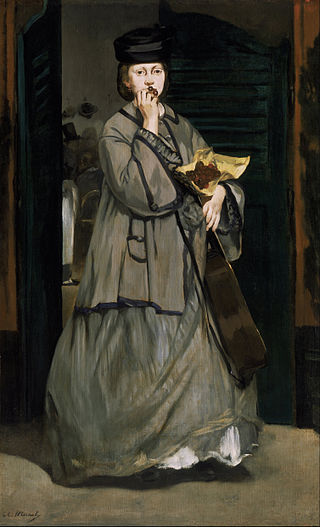
The Street Singer is an 1862 oil-on-canvas painting by Édouard Manet depicting a female street musician standing near the entrance to a cabaret.
References
- 1 2 3 4 5 6 7 8 9 Aharonian, Gregory; Stim, Richard (2004). Patenting Art & Entertainment . Berkeley, CA: Nolo. ISBN 9781413300321. OCLC 56804033.
- ↑ ArtLex at www.artlex.com/ArtLex/Li.html
- ↑ "Pablo Picasso. Art, life, and world of modern". Moodbook.com. Retrieved 2012-05-26.
- 1 2 3 "The United States and Canada, 1900 A.D.–present". The Metropolitan Museum of Art . Heilbrunn Timeline of Art History. October 2004.
- ↑ Honour, Hugh (2005). A World History of Art (7th ed.). London: Laurence King. ISBN 9781856694513. OCLC 60668528.
- ↑ "and also Michael Kimmelman www.NY Times.com "A Drip by Any Other Name", February 12, 2006". Manythings.org. 2010-02-19. Retrieved 2012-05-26.
- ↑ "Bartolomeo Cristofori, Inventor of the Piano". Timeline Index. Retrieved 2012-05-26.
- ↑ "Robert Moog and The Moog Synthesiser". 120years.net. Retrieved 2012-05-26.